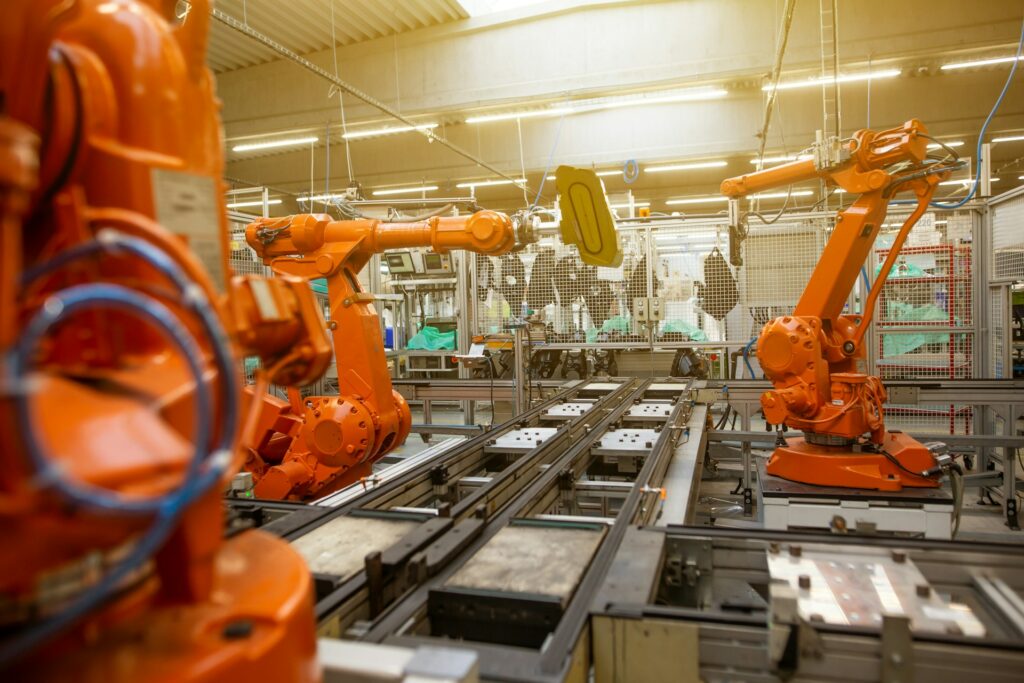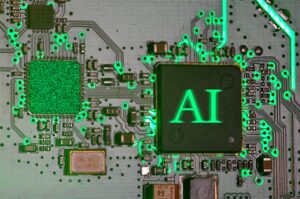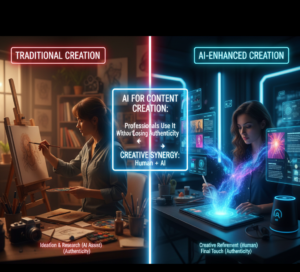The use of artificial intelligence for predictive maintenance in the manufacturing industry

The use of artificial intelligence for predictive maintenance in the manufacturing industry
Of all the uses of artificial intelligence in manufacturing, Predictive Maintenance (PdM) is one of the most influential. It alters the maintenance approach from one that is reactive (repairing after a failure) or preventive (repairing at certain intervals) to one that is predictive, in which the health of the equipment is constantly monitored and faults are expected before they take place.
How Artificial Intelligence Makes Predictive Maintenance Possible
Gathering Information
- Information about vibration, temperature, sound, pressure, and energy usage is collected from machines using sensors, which are also known as Internet of Things (IoT) devices.
- Logs of historical events and maintenance records are other sources of information that are used.
Processing Data and Extracting Features
In order to detect patterns or abnormalities, artificial intelligence models examine sensor signals.
Early warning signals of wear or flaws may be identified by using feature extraction, which includes techniques such as identifying frequency patterns in vibration data.
Predictive Modeling
Equipment’s remaining useful life (RUL) may be predicted using machine learning algorithms such as Random Forest, Support Vector Machine (SVM), and XGBoost.
For the purpose of making more accurate predictions about failure, Deep Learning (such as LSTMs and CNNs) processes time-series sensor data.
Decision Assistance
Technicians are notified by artificial intelligence dashboards on the potential for problems to occur.
- Downtime and expenditures are reduced as a result of the maintenance being planned at the very last minute.
- Advantages of Predictive Maintenance that is Driven by Artificial Intelligence
- Minimized downtime: Helps to prevent unexpected breakdowns of equipment
Savings in Cost: Eliminates regular maintenance that is not required.
- Extended Equipment Lifespan: Early diagnosis prevents significant harm from occurring.
- Safety Improvements: Identifies hazards prior to the occurrence of catastrophic failures.
- Optimized Operations: Assists in the planning of both the workforce schedule and the spare parts inventory.
Examples of Practical Applications
Automotive Manufacturing: Artificial Intelligence Predicts Robot Arm Malfunctions on Assembly Lines
- Aerospace: In order to avoid problems from occurring during a flight, vibrations and heat changes in engines are monitored.
- Food and Beverage Industry: Preventing interruptions in production by forecasting the wear and tear that will occur on the conveyor belt
- Oil and Gas: In order to prevent expensive shutdowns, pipelines and compressors are constantly monitored.
- Examples of Artificial Intelligence Techniques for Predictive Maintenance
- Anomaly detection: Autoencoders and Isolation Forest
- Time-series forecasting: LSTMs, ARIMA + ML hybrids, and other methods
Digital twins are virtual duplicates of machinery that mimic the wear and tear that occurs under actual circumstances.
The combination of the Internet of Things (IoT), machine learning, and analytics in predictive maintenance, which is powered by artificial intelligence (AI), is revolutionizing the manufacturing industry. By using predictive maintenance, manufacturers are now able to anticipate problems before they occur, which leads to increased operational safety, lower costs, and enhanced dependability.






